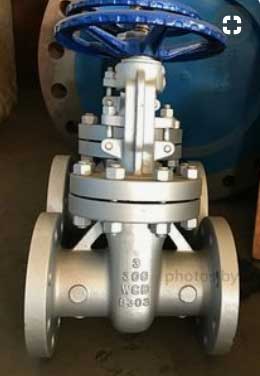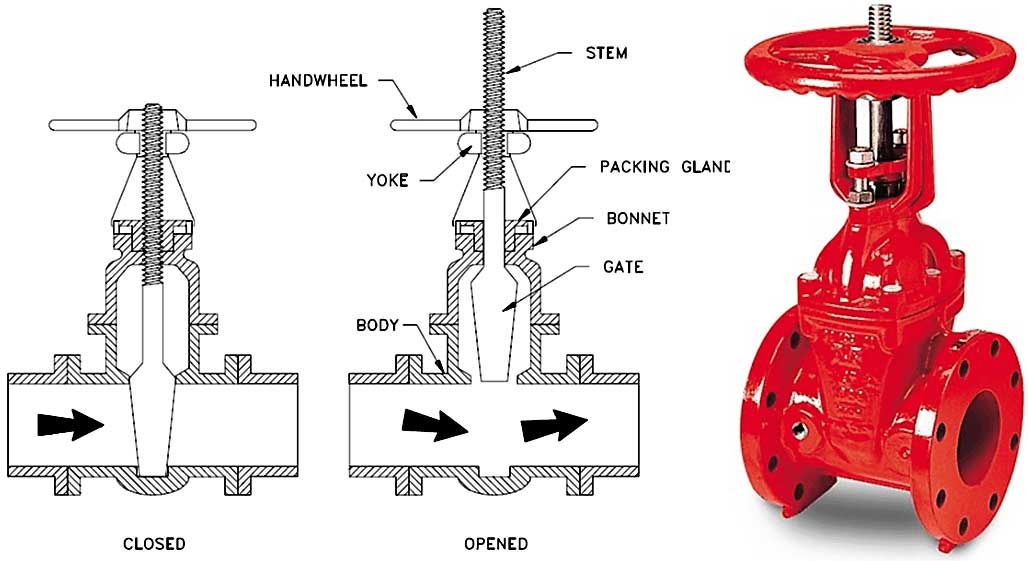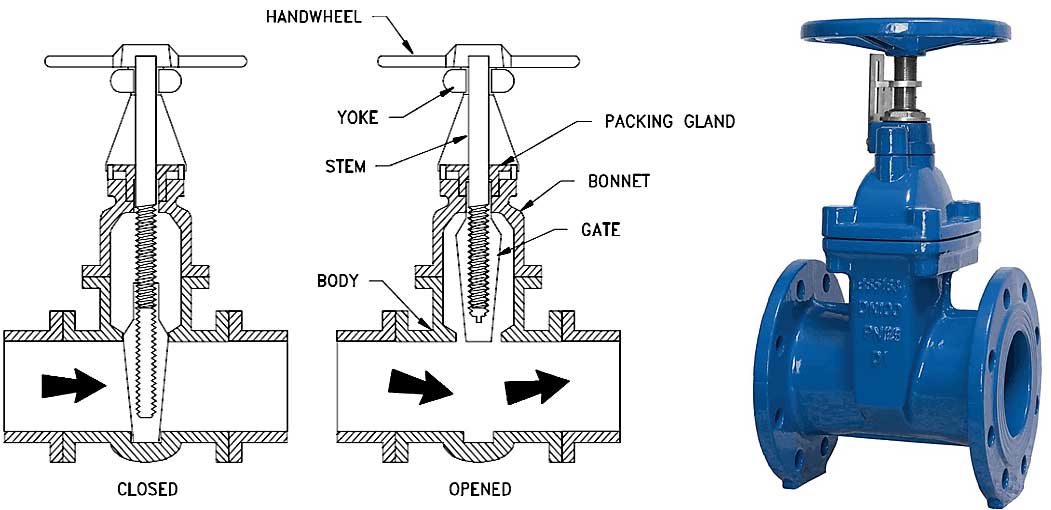There are various factors on how to classify gate valves, such as (1) Disks; (2) Body Bonnet Joint; and (3) Stem movement.
Type of Gate Valves based on disk:

Solid Wedge – It is the most common & widely used disk types because of its simplicity and strength. A valve with solid wedge may be installed in any position, and it is suitable for almost all fluids. It can also be used in turbulent flow. It uses two inclined seats and a slightly mismatched inclined gate.Disk flexibility is inherent to the split wedge design. This flexibility allows the split wedge to seal more easily and it reduces stickiness between the sealing surfaces in cases where the valve seats are angularly misaligned.

Split Wedge/Parallel disks – It consists of two solid pieces hold together with the help of special mechanism. In some cases, one-half of the disk is out of alignment; the disk is free to adjust itself to the seating surface. The split disk can be in a wedge shape or a parallel disk type. Parallel disks are spring loaded, so they are always in contact with seats and give bi-directional sealing. Split wedge is suitable for handling noncondensing gasses and liquids at normal and high temperature.

Flexible Wedge – It is a one-piece solid disk with a cut around the perimeter. These cuts vary in size, shape, and depth. A shallow, narrow cut on wedge perimeter gives less flexibility but retains strength. A cast-in recess or deeper and wider cut on wedge perimeter gives more flexibility but compromises the strength.
Type of Gate Valves based on Bonnet:
1 Screwed bonnet:This is the simplest design available and it is used for inexpensive valves.
2 Bolted-bonnet:This is the most popular design and used in a large number of gate valves. This requires a gasket to seal the joint between the body and bonnet
3 Welded-Bonnet:This is a popular design where disassembly is not required. They are lighter in weight than their bolted-bonnet counterparts.
4 Pressure-Seal Bonnet:This type is used extensively for high-pressure high-temperature applications. The higher the body cavity pressure, the greater the force on the gasket in a pressure -seal valve.




Type of Gate Valves based in Stem Movement:

Rising Stem – stem will go up while opening the valve and move down when you close the valve. In inside screw design, the threaded portion of the stem is in contact with the flow medium and when you open the valve, handwheel rise with the stem.

Non Rising Stem – in this type of valve, there is no upward movement of the stem. The valve disk is threaded internally. The disc travels along the stem like a nut when the stem is rotated. In this type of valve, stem threads are exposed to the flow medium. Therefore, this design is used where space is limited to allow linear stem movement, and the flow medium does not cause erosion, corrosion, or wear and tear to stem material. This type of valve also known as insider screw valve.


Leave A Comment